Wave Goodbye, Wave Hello
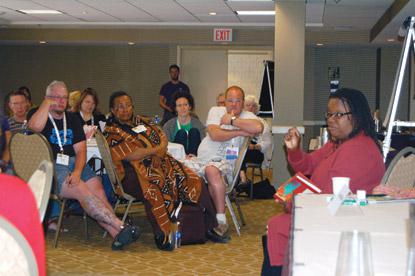
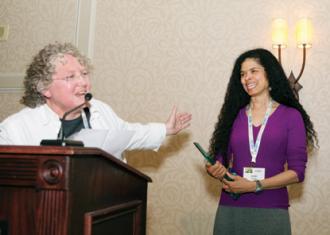
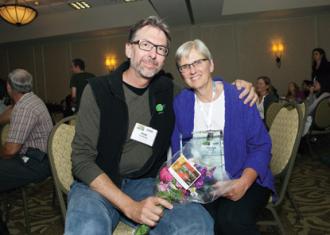
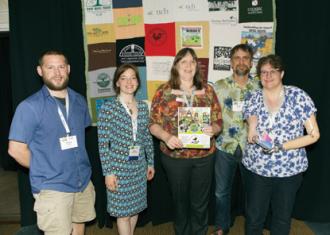
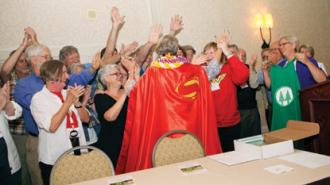
The annual food co-op milestones summary is presented at the CCMA (Consumer Cooperative Management Association) conference and reported in these pages. Its listings recognize both new and longstanding community-owned enterprises and, taken as a whole, it highlights much about our history. Remarkably, we’re a three-generation movement of co-op activists now, combining many veterans with many newcomers.
This issue reports on aspects of a landmark CCMA conference, and my commentary will continue on those pages. For various reasons to be mentioned at the end, I doubt whether in the future we will see an equally large and diverse set of food co-op leaders and campaigns gathered in one place.
Old and new milestones
We have a lot of food co-ops now in their 40s. During the 1970s decade, the co-ops we launched were known as a “new wave” to distinguish us from the generation of co-ops founded during prior decades. Many of the cooperators who seemed old to us newcomers actually were younger than our veteran leaders are today!
Our cooperative sector is strengthened by a group of longtime leaders and by a growing stream of new ones. It matters that we know something of our generational transitions.
Those older co-ops shared a pretty impressive history and, though declining by then, had a stronger influence on the “new wave” than many recognized. Regional co-op organizations, serving their member retails, in varying ways also acted as distribution and development centers for the 1970s food co-ops: Associated and Berkeley in California, Central States Cooperatives and Hyde Park in the Midwest, Mid-Eastern and Greenbelt on the Atlantic side. Their national CO-OP label product lines also dwindled, after being briefly revived during the 1980s for the natural food co-ops through Central States and its farm and grocery supply headquarters at Universal Cooperatives (the latter just last month announced its liquidation).
Comparable national grocery purchasing did not return until the new generation co-ops matured and again organized nationally around 2000—but a co-op label has yet to reappear. National Cooperative Grocers Association (NCGA) now plays a powerful role that parallels the old wave co-ops that greeted the new wave in the 1970s. The established co-op education and training networks also welcomed the new wave through the former Consumer Cooperative Alliance and at the CCMA conference. The latter, a virtual association that realizes its co-op vision and practice through an annual conference, has flourished as the key national gathering point of the food co-ops it has nourished.
Regeneration
In the cultural upheaval and movements for change that blossomed throughout the 1970s, one nexus that endured was food co-ops and their pragmatic idealism. The new wave attempted radically reformed work relations and decision-making, sought big changes in food and farming practices, demanded regular purchase discounts for members, and argued about the need for profit. In many of these community-based ventures, it took several years or more to learn functional self-governance, establish accountable management, and even to incorporate as cooperatives. The co-op way provided a sound organizational structure that, later still, enabled them to take advantage of the deep benefits of its patronage refund method of handling earnings and building owner capital.
That 1970s food co-op wave, birthing today’s 40-year-olds, lasted until around 1982. Then came lean years, a 25-year period that generated a total of only 18 new food co-ops that are still in operation today. But the existing co-ops kept getting stronger as organizations, better as grocers, and more tied to other co-ops.
Another wave of food co-op formation sprung up around 2006 and is being sustained—more than 50 new co-ops have opened stores in the past five years. Compared to the food co-op movement of 40 years ago, today’s newest wave has a stronger set of existing resources to draw upon—especially from dynamic, established cooperatives that are launching their own new stores and enterprises. We’ve now seen many years of overall growth among those veteran co-ops, the rewards of collaborative work and support from both local communities and national organizations.
It’s not news that our food co-ops have come a long way in four decades—yet the realization of age can still be a surprise. Today our co-ops activists constitute a multigenerational movement, and the big tent atmosphere of the CCMA conference brings together and illustrates that diversity and mark of renewal. Many of the founders who are still active in co-op leadership, now aged in their 60s, will be gone from those positions within the next few years. Some of them have retired or soon will, giving way to the next two generations of co-op leaders—and that is fitting.
Given their small and independent beginnings, as well as a conservative approach to expansion, the 1970s co-ops took nearly 30 years to hit high gear. Now most retail co-ops are thriving and expanding strongly, growing more owners and sales, and opening expanded or additional stores at the rate of nearly one per month. We have stronger national organizations that are deepening and unifying many elements of our co-ops. However, other retailers with deep pockets are trying to capture the organic market also. Along with continuing strong growth in organics, co-ops are losing market share in that critical niche.
There’s still not enough unity among cooperatives—regionally, nationally, and across sectors—which may weaken our future. But we are in a dramatically better position to grow cooperatives than we were 40 years ago.
“Forward!” with mixed messages
Learning and celebrating in downtown Madison, Wisconsin, well over 500 attendees enjoyed the 58th annual CCMA conference, ending June 14. CCMA brings together food co-op managers and board members from across the country, trainers, and challenging speakers from within and outside the cooperative sector, as well as many opportunities for networking and special caucuses. (Visit www.ccma.coop for more images and comments.) More than 120 food cooperatives were represented in Madison, bringing together many veteran leaders with a large contingent of first-timers for a rich blend of shared experience and new ideas.
Local host Willy Street Co-op’s staff and board members, led by Stephanie Ricketts and General Manager Anya Firszt, provided essential support to Ann Hoyt and staff at the University of Wisconsin Urban Cooperative Initiative. They organized access to a rich array of local attractions, including diverse tours of area co-ops and enterprises, visiting food retails and community development centers, credit unions and worker co-ops, Just Coffee, and an Organic Valley dairy farm.
CCMA rotates annually to a new city, its tradition established as a spirited and instructive gathering of the tribe. This year’s highest-ever attendance was attributable to the ongoing success of food co-ops, with a large number of them in Wisconsin and Minnesota, and to a desire to honor the conclusion of Hoyt’s 25-year leadership in planning and overseeing this unique gathering.
Mayor Paul Sauglin, a passionate and progressive politician, gave a welcome that strongly emphasized solidarity. The conference’s “Forward!” slogan, borrowed from the state of Wisconsin, was joined to a theme of co-op action figures and the vision and everyday dedication that have brought today’s food cooperatives to their greatest level of organizational strength and growth in co-op member-owners and sales.
Keynote speakers Reginaldo Haslett-Maroquin and Venice Williams addressed issues of social justice and the need to extend both food production and retail services to ethnic communities and low-income populations that struggle with access to good food and cooperatives. Their passionate and challenging messages were neither entirely easy to hear nor entirely persuasive.
Haslett-Maroquin, a native of Guatemala, is the head of Main Street Project in Minnesota. This enterprise aims to help Latino immigrants gain access to land for small-scale poultry production and collectively to achieve essential scale in production through a cooperative. His call for an ecologically sound and socially just food system inspired the audience. However, I am aware that the realization of this vision, back home in the field, is proving to be a difficult and deep challenge, given barriers such as land access and capital resources, outreach and cooperative formation, production costs and strong market competition from larger clean poultry producers. A collective vision requires collective participation, and that is hard to achieve among small, low-income producers.
Another keynote, Venice Williams, a minister and director of the Milwaukee project Alice’s Garden, also addressed racial and economic justice, evoking her African-American farming heritage and delivering challenges to what she described as a paternalistic attitude toward low-income residents and communities. Williams recommended Culinary Capital, by Peter Naccarato, for insights into how our attitudes and practices around food extend to deeper cultural patterns. We were reminded that outreach to low-income communities, to be effective, must seek their voice and participation. However, Williams mistook the conference visual theme of cooperative action heroes as reflecting class-based paternalism.
Concerning access for low-income shoppers, questions around price will persist in any case, given the business scale at which food co-ops operate. The conference program had a full track of workshops on the topic of “food access.” As discussed in my previous editorial (“Pick Two and Call Me Back,” CG May–June 2014), the dilemma around price pressure and other goals is a strong concern, leading to some innovative practices. Yet it is difficult for food co-ops, which are thriving but operate on thin margins, to follow either CCMA speaker’s recommendations and also act as economic developers.
Award winners
The CCMA banquet celebrates co-op milestones (see page 13) and honors contributors who are nominated by their peers and chosen by previous award winners. At the CCMA 2014 awards banquet, Annie Hoy of Ashland (Ore.) Co-op presided over a celebratory group. After absurdist commentary from the Italian Grocers Caucus (arrividerche!), the crowd gave recognition to several leaders and co-ops.
The award for Cooperative Board Service went to Jade Barker, president at River Valley Market in Massachusetts, for her dedicated, sustained, and inspirational leadership during a very protracted startup effort. Barker and other community members worked for 10 years prior to a 2007 opening, and General Manager Rochelle Prunty introduced Barker with high praise for her contributions.
River Valley Market itself received the award for retail Cooperative Excellence. In 2013, its sixth year, the co-op reached 6,000 member-owners, $20 million in sales, and a patronage refund of which 40 percent was contributed to support low-income memberships. Rebecca Dunn of Co-op Fund of New England and Pam Mehnert of Outpost Co-op highlighted some of River Valley Market’s struggles and achievements, and Prunty and other board and staff from the co-op were on hand to receive the crowd’s applause.
The award for Cooperative Innovation and Achievement went to Cooperative Board Leadership Development (CBLD), a program generated over the past 10 years by CDS Consulting Co-op, which had many of its members present. In announcing the award, NCGA’s Carol Collins spoke about how CBLD has made co-ops stronger through deeper board training and, in strengthening co-ops overall, has expanded right livelihood.
Since last year’s announcement of newly opened storefront food co-ops, another 12 have been added. Stuart Reid of Food Co-op Initiative (FCI) announced the Food Co-op Startup of the Year, an award sponsored by CDS Consulting Co-op. This year’s recipient is the Co-op Market Grocery & Deli in Fairbanks, Alaska; its general manager, Mary Christensen and staff and board members, were on hand. Reid reports on the new co-ops and some of the exciting stories behind them on page 18.
The award for Cooperative Service went to Ann Hoyt for a long list of major contributions—see page 15 for key examples and quotes in support of her award.
Howard Bowers Fund
One way today’s food co-op sector honors both its past and its future development is through the Howard Bowers Fund, endowed in 1993 by Hyde Park Co-op and named for its long-time manager, Howard Bowers, a five-decade co-op veteran and a mentor to co-ops. The Bowers Fund is managed by the Cooperative Development Foundation and is supported through contributions that are used to support food co-op development, including scholarships for attending CCMA as well as other training events and projects. This year, supported by the Bowers Fund, some 40 CCMA attendees received scholarships. Fundraising events held at the conference, and extended afterwards, generated an estimated $23,000 for future scholarships and training support. Co-ops also can make a contribution to the Fund by joining in the October campaign around Howard Bowers Day, a locally chosen date on which a percentage of the participating co-op’s sales goes to the Fund. (Contact Ellen Quinn, equinn@cdf.coop.)
Capital Summit
What about the previously mentioned erosion of co-ops’ market share? A preconference forum discussed avenues to formation of cooperative capital and the successful development of food co-ops. New food co-op formation efforts are forced to rely almost entirely on their own homegrown capital drive and fundraising. On the other hand, existing co-ops are in a strong expansion mode, and while most of them are strongly profitable, the investment in expansion and/or additional store sites often requires a larger contribution of co-op capital in order to leverage funds to meet project needs. With proper review and financial structures, other sources of capital could be available.
FCI initiated the forum, including representatives from NCGA, Cooperative Grocer Network (CGN), NCB (National Co-op Bank) and Capital Impact Partners. The last of these groups has added $8 million to the new Development Cooperative Loan Fund, thus leveraging $2 million in investments by NCGA members for a total fund of $10 million (see the report on page 10). Other co-op loan funds such as Co-op Fund of New England, LEAF loan fund, and Northcountry Cooperative Development Fund also were present for the full-day Summit.
There was a sense within the group that adequate capital resources exist within our cooperatives broadly, but that we are not utilizing them well. Access to capital for co-op development could be improved by greater collaboration and support from other co-op sectors, such as credit unions and electric co-ops. There also is a huge potential, only partially realized, for more investment in food co-ops by the hundreds of thousands of member-owners and by the co-ops themselves.
My own view of this member-owner potential was sharpened in the course of producing a study on the “Twin Cities Cooperative Local Food System” (presented at the CCMA conference and available at www.cdsus.coop). That study, as well as the national report of 2012 from NCGA, “Healthy Foods, Healthy Communities,” made it clear that retained earnings from member-owner sales is the largest source of cooperative capital, yet average sales per member-owner are quite low. There is much opportunity for higher sales per member, which leads to stronger capitalization of the cooperative with profitable operations.
A parallel argument has been made for many years that co-ops should invest together in cooperative development, and that we need to create means for the thousands of co-op member-owners to direct more of their contributions toward cooperatives. Most of the income leveraged from millions of dollars in food co-op accounts, and the additional millions donated or invested by member-owners, are going to the world of private finance or to nonprofits rather than to co-ops. David Thompson and others have been emphasizing this for years and proposing greater use of investment vehicles such as Twin Pines Cooperative Foundation, programs that capture a broad base of member contributions and direct monies to local causes (see the report on the Twin Pines, page 16). I vowed as Cooperative Grocer editor to promote more examples of cooperation among cooperatives in the area of capital and shared investments for co-op development.
Other potential institutional partners were reviewed, including community development financial institutions, which could support co-ops more strongly, and the Small Business Administration, which at present doesn’t lend to co-ops but is conducting a review of its policies.
A new approach to supplementing cooperative capital was announced by Margaret Lund and others behind Co-op Principal, a project that adapts the long-established practice of investment clubs to investing in co-ops. Supported by a central administrator, each local group investigates and decides upon its own investments, which could include specific co-ops as well as development organizations. Numerous food co-op owner investment and loan drives have demonstrated the potential for generating significant capital from the local co-op community, and the Co-op Principal concept has even broader application. It is in the beta stage, but I predict a future “Innovation and Achievement” award for this nascent project.
Future of CCMA
CCMA 2015 will be held June 10–13 in Boise, Idaho. Boise Co-op (featured in the previous issue of CG) will be the local host; General Manager Ben Kuzma and other co-op members were present for the announcement.
With the end of Ann Hoyt’s outstanding tenure as the planner of CCMA, that responsibility has now reverted to its formal owner, National Cooperative Business Association (NCBA), our national cross-sector trade organization and a key actor in international co-op development through CLUSA. Hoyt set a very high bar for the CCMA experience, and I don’t think it is contentious to suggest that NCBA should not be expected to maintain CCMA’s scope or scale. The necessary deep perspective, strong institutional support, and broad familiarity with food co-ops nationally—all of which have made CCMA such an outstanding event—are an unusual combination. In addition, the paucity of food co-ops in the Rockies and pressure around travel and conference costs will reduce attendance next year. Budget decisions on education and training opportunities are not likely to become any easier.
Lastly, the trend in CCMA participation toward more board members and fewer managers is continuing, in part because NCGA offers ever more and stronger services for its members. NCGA is an inseparable part of our food co-op identity and prospects, and I strongly hope that organization, driven by its member co-ops, will collaborate with NCBA to fulfill the tradition of a big-tent gathering of food co-op leaders—from startups to veterans and from retails to co-op developers, uniting managers and board members and allies, offering both substantial training and vital celebrations.
The prospects for the stronger communities and services that food co-ops build, and the need for cooperation among cooperatives to deepen our impact, have never been greater in our lifetimes.







